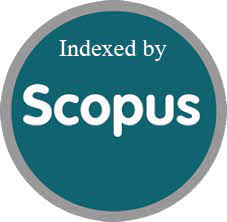The Intersection of Sports Rehabilitation, Disability Law, And Technological Innovations: A Political Evolution and Scientific Innovation of Legal Protections for Athletes with Disabilities in India, The UK, And The US
DOI:
https://doi.org/10.52783/jns.v14.2102Keywords:
Sports Rehabilitation, Disability Law, Americans with Disabilities Act (ADA), Rights of Persons with Disabilities Act (RPWD), Equality Act 2010, Disability Rights, Legal Protections, Accessible Rehabilitation, Athletes with DisabilitiesAbstract
The intersection of sports rehabilitation and disability law is crucial in ensuring that athletes, including those recovering from sports-related injuries, have access to equitable rehabilitation services. In particular, the Americans with Disabilities Act (ADA) in the United States provides a legal framework to protect athletes with disabilities, including those who have sustained injuries that lead to long-term or permanent impairments. This paper explores the application of disability laws in sports rehabilitation, focusing on the ADA in the United States, as well as corresponding legal frameworks in India and the UK. It examines how these laws ensure that athletes with disabilities receive the necessary accommodations and support to recover and return to their sports. By analyzing key cases, legislation, and regulations, this paper highlights the challenges and opportunities for providing accessible rehabilitation services to athletes with disabilities in both developed and developing contexts. Sports injuries often result in long-term disabilities that require specialized rehabilitation, but athletes with disabilities face unique challenges in accessing equitable care. This paper explores the intersection of sports rehabilitation and disability law, analyzing how legal frameworks in India, the UK, and the US ensure accessibility and accommodation for athletes recovering from sports-related injuries. The paper delves into key laws such as the Americans with Disabilities Act (ADA), the Rights of Persons with Disabilities Act (RPWD) in India, and the Equality Act 2010 in the UK, highlighting their impact on ensuring equal opportunities in rehabilitation for athletes with disabilities. Drawing on case studies and legal precedents, the paper examines the challenges, opportunities, and gaps in implementing these laws within sports rehabilitation settings. The aim is to provide an in-depth understanding of the current legal protections and propose recommendations to enhance accessibility and inclusion for athletes with disabilities in sports rehabilitation. By including political science and computer science, this broader perspective allows for an exploration of Political Science and how national policies, legal protections, and political advocacy shape the rehabilitation and inclusion of athletes with disabilities in sports, and how these laws intersect with issues of disability rights, funding, and access to sports facilities and Computer Science as how emerging technologies like wearable devices, AI, virtual reality, and data analytics are transforming sports rehabilitation, and how these technologies can support the implementation of disability laws and policies.
Downloads
Metrics
References
India:
Rights of Persons with Disabilities Act, 2016 (RPWD Act), Government of India, Ministry of Social Justice and Empowerment. Available at: https://disabilityaffairs.gov.in
National Sports Development Fund (NSDF), Government of India. Available at: https://www.sportsauthorityofindia.gov.in
National Federation of the Blind v. Union of India (2014). Supreme Court of India.
Census of India 2011, Government of India. Available at: http://www.censusindia.gov.in
Ministry of Youth Affairs and Sports. (2019). Annual Report on Sports for the Disabled.
Technology in Disability Sports in India: Emerging Trends, Journal of Disability Studies, 2021.
United Kingdom:
Equality Act, 2010, Government of the United Kingdom. Available at: https://www.gov.uk/government/publications/equality-act-2010-guidance
Sport England (2019). Disability Sport Statistics Report. Available at: https://www.sportengland.org
English Federation of Disability Sport (EFDS). (2020). Annual Report: Disability Sports in the UK. Available at: https://www.equalityinsport.org.uk
Sutton v. United Air Lines (2000), Court of Appeal, UK. (Case)
Paralympic Games: The Role of Law and Technology in Supporting Athletes, International Journal of Sports Law, 2020.
United States:
Americans with Disabilities Act (ADA), 1990, United States Department of Justice. Available at: https://www.ada.gov
Tennessee v. Lane (2004), U.S. Supreme Court. (Case)
National Disability Institute (NDI). (2021). Disability Participation and Employment in Sports. Available at: https://www.ndi.org
National Paralympic Committee (USA). (2020). Annual Report on U.S. Athletes with Disabilities.
National Federation of the Blind v. U.S. Department of Transportation (2002). (Case)
The Role of AI and Robotics in Disability Sports Rehabilitation, Journal of Computer Science and Rehabilitation, 2020.
General Sources:
International Paralympic Committee (IPC). (2021). Global Disability Sports Participation Trends. Available at: https://www.paralympic.org
The Impact of Technology on Sports Rehabilitation for Athletes with Disabilities, International Journal of Disability and Rehabilitation, 2021.
AI and Sports: The Future of Rehabilitation for Athletes with Disabilities, Journal of Artificial Intelligence in Sports, 2022.
Downloads
Published
How to Cite
Issue
Section
License

This work is licensed under a Creative Commons Attribution 4.0 International License.
You are free to:
- Share — copy and redistribute the material in any medium or format
- Adapt — remix, transform, and build upon the material for any purpose, even commercially.
Terms:
- Attribution — You must give appropriate credit, provide a link to the license, and indicate if changes were made. You may do so in any reasonable manner, but not in any way that suggests the licensor endorses you or your use.
- No additional restrictions — You may not apply legal terms or technological measures that legally restrict others from doing anything the license permits.










